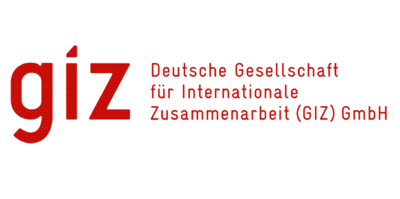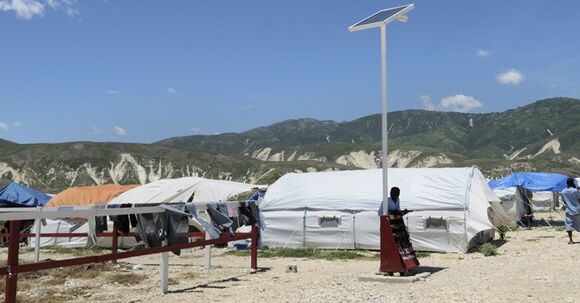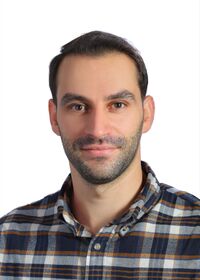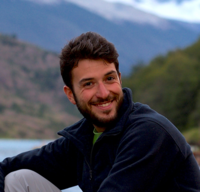Difference between revisions of "Webinar on Energy Efficiency in Humanitarian Organization Infrastructure: Case Study from Kenya and Ethiopia"
***** (***** | *****) m |
***** (***** | *****) m Tag: 2017 source edit |
||
| (2 intermediate revisions by the same user not shown) | |||
| Line 1: | Line 1: | ||
| + | <div class="portal-esds"> | ||
| + | {{ESDS:Link to Articles}} | ||
| + | |||
| + | |||
[[File:Sustainable_Operation_and_Maintenance_in_SUN_ESDS_Displacement_Settings.jpg|alt=|border|right|580x580px]]Energy efficiency (EE) is the “low hanging fruit” that is often ignored or not utilized to the fullest. However, EE interventions should be the first step towards the transition to clean energy with many low or no-cost interventions that can easily be implemented resulting in both energy and financial savings. | [[File:Sustainable_Operation_and_Maintenance_in_SUN_ESDS_Displacement_Settings.jpg|alt=|border|right|580x580px]]Energy efficiency (EE) is the “low hanging fruit” that is often ignored or not utilized to the fullest. However, EE interventions should be the first step towards the transition to clean energy with many low or no-cost interventions that can easily be implemented resulting in both energy and financial savings. | ||
This webinar will feature a presentation on the “Energy Efficiency Implementation Guidelines” which includes interventions and activities for improving EE across five primary areas i.e. power generation, power distribution, appliances, buildings and behavioral changes. Case study from Kenya will focus on good practices of incorporating energy efficiency in humanitarian infrastructures. | This webinar will feature a presentation on the “Energy Efficiency Implementation Guidelines” which includes interventions and activities for improving EE across five primary areas i.e. power generation, power distribution, appliances, buildings and behavioral changes. Case study from Kenya will focus on good practices of incorporating energy efficiency in humanitarian infrastructures. | ||
| − | |||
| − | |||
== Video == | == Video == | ||
| Line 44: | Line 46: | ||
[[File:Logo GIZ.gif|left|400x400px|alt=Gizlogo-unternehmen-de-rgb copy.gif|link=]] | [[File:Logo GIZ.gif|left|400x400px|alt=Gizlogo-unternehmen-de-rgb copy.gif|link=]] | ||
| − | + | </div> | |
__NOTOC__ | __NOTOC__ | ||
__NOEDITSECTION__ | __NOEDITSECTION__ | ||
Latest revision as of 09:02, 20 June 2022
This webinar will feature a presentation on the “Energy Efficiency Implementation Guidelines” which includes interventions and activities for improving EE across five primary areas i.e. power generation, power distribution, appliances, buildings and behavioral changes. Case study from Kenya will focus on good practices of incorporating energy efficiency in humanitarian infrastructures.
Video
Presentations
Additional Resources
- Greening the Blue Report 2021: https://www.greeningtheblue.org/reports/greening-blue-report-2021
Speakers
Mustafa Almomani
Energy Expert, Greening and Sustainability Team
UNHCR Division of Financial and Administrative Management (DFAM)
East and Horn of Africa and Great Lakes Countries
Davide Mazzoni, Trama Tecnoambiental
Davide Mazzoni is Senior Project Manager and Consultant at Trama Tecnoambiental, involved in projects in Africa, Asia, and Pacific regions. He holds a B.Sc. in Energy Engineering and a M.Sc. in Energy from Polytechnic University of Turin in Italy and is specialized in geospatial analysis and planning. Before he joined TTA, he worked in the field of sustainable energy in Chile, Italy, and the UK, and was involved in projects related to electricity access in South Africa, Kenya, and Ghana. During his experience as a researcher, he developed comprehensive geospatial analysis tools for rural electrification. He can make the best use of satellite imagery and GIS data when it comes to rural electrification planning and feasibility studies for mini-grid projects. Davide also has hands-on experience in designing and successfully delivering grid-connected solar PV projects, battery storage, and EV charging points, thanks to his experience as a Project Designer and Project Manager with British EPC.
Organised by
























